
72
HNUE JOURNAL OF SCIENCE
Educational Sciences 2024, Volume 69, Issue 5B, pp. 72-82
This paper is available online at http://hnuejs.edu.vn/es
DOI: 10.18173/2354-1075.2024-0136
ADAPTATION OF 6TH GRADE STUDENTS
TO MATHEMATICS ASSESSMENT STANDARDS
Chu Cam Tho1, Nguyen Thi Quynh Anh2, Vu Truong An1, Luu Thanh Ha3,
Duong Thi Thu Huong1, Dang Xuan Cuong1 and Nguyen Viet Dung2
1Vietnam Institute of Educational Sciences, Hanoi city, Vietnam
2Adaptive Learning Global Education Joint Stock Company, Hanoi city, Vietnam
3Victoria Thang Long Primary and Secondary School, Hanoi city, Vietnam
*Corresponding author: Nguyen Thi Quynh Anh, e-mail: anhntq@aeglobal.edu.vn
Received April 19, 2024. Revised October 10, 2024. Accepted December 27, 2024.
Abstract. This paper examines how the 2018 general education curriculum aligns with
competency-based assessment standards, with a particular focus on 6th-grade mathematics.
The research encompasses the design and implementation of a computer-based end-of-year
mathematics exam, created between March 1 and May 15, 2023, and administered to over
3,850 students via the AEGlobal educational platform. The study underscores the importance
of a competency-based assessment framework in education, exemplifies this through the
development of a mathematics assessment tool, and offers insights into student adaptability
to the new standards. Furthermore, it contributes to enhancing teaching and learning quality
across the general education system.
Keywords: assessment, competency, end-of-year examination, Mathematics, standard.
1. Introduction
The policy of using standards for assessment is adopted by many countries to ensure
transparency and maintain sustainable quality in education. The term "standard" holds various
meanings depending on the context. According to Maxwell [1], the term “standards” encompasses
at least five distinct interpretations, categorized here as: (1) standards as moral or ethical
imperatives (what someone should do); (2) standards as legal or regulatory requirements
(what someone must do); (3) standards as target benchmarks (expected practice or performance);
(4) standards as arbiters of quality (relative success or merit); and (5) standards as milestones
(progressive or developmental targets). The first three types are considered desirable, necessary,
or appropriate, while the last two represent outcome levels. The first type is often conveyed
through guidelines or professional codes, the second through performance requirements implying
the possibility of failure (e.g., requirements for program approval or certificate awarding), and
the third through statements detailing expected outcomes.
Maxwell [2] extended his research on "standards" aiming to offer a clearer description of
their structure. He identified four main characteristics of the assessed construct: (1) learning
versus performance; (2) development (time-extensive, assessing interim progress) versus

Adaptation of 6th grade students to mathematics assessment standards
73
achievement (time-limited, assessing degree of success); (3) criterion-referencing versus norm-
referencing; and (4) quality (how well) versus quantity (how much). The choice of constructs
determines how we represent and express relevant standards. Regarding the purposes of
standards, these may include: (1) setting targets for student learning; (2) showing students their
progress; (3) promoting consistency in judging achievement or progress; (4) setting qualification
requirements (certification); (5) interpreting test performances; (6) setting benchmarks for system
monitoring; and (7) ensuring accountability for schools and systems. These purposes are often
used in combination. Standards can be implemented in three specific ways: content standards,
performance standards (focusing on merit or proficiency), and developmental standards. Content
standards act as a "road map" for schools and teachers, outlining the overall knowledge structure
for each domain and providing a framework for planning and delivering the curriculum. In the
United States, "standards" often refer to "content standards". Performance standards, by contrast,
define the levels of knowledge and skills students must attain and serve as a basis for measuring
outcomes and applying sanctions when necessary. For example, in Georgia, performance
standards go beyond content standards by detailing specific knowledge and skills expected of
students, along with assessment tools like tests and student work samples. These standards often
use methods like "cut-scores" to define achievement levels. However, a limitation of performance
standards is their failure to clearly show how students progress over time, particularly when
identical labels (e.g., A–E) and generic descriptors are applied repeatedly. Developmental
standards, on the other hand, provide progressive labels and descriptions, illustrating the journey
of learning and milestones achieved.
According to the OECD [3], the term "standard" carries different meanings across countries
and contexts. In some cases, it is used interchangeably with "objectives" or as criteria for
determining whether a specific achievement is adequate or describes the level of progress in a
particular domain. A standard can be understood as "defining what someone should know and be
able to do to be considered competent in a specific area”. Standards may describe and
communicate desired outcomes, quality learning, or best practices. Additionally, they can serve
as a benchmark or measurement tool, aiding decision-making by highlighting the gap between
actual performance and the minimum level of competence required.
In mathematics, some commonly used assessment standards at the secondary level include
the Common Core State Standards for Mathematics (CCSS) [4] and Singapore’s Mathematics
Syllabus [5]. Regarding the CCSS, Confrey [4] highlights the importance of developing
"sequenced obstacles and challenges for students absent the insights about meaning that derive
from careful study of learning, would be unfortunate and unwise”. Recognizing this, the creation
of these standards began with research-based learning progressions, detailing how students’
mathematical knowledge, skills, and understanding evolve over time. In Singapore’s Mathematics
Syllabus, the primary goals of mathematics education are to: (1) acquire and apply mathematical
concepts and skills; (2) develop cognitive and metacognitive skills through a mathematical
approach to problem-solving; and (3) cultivate positive attitudes toward mathematics.
In Vietnam, the General Education Curriculum (GEC) introduced the term "standard",
particularly "knowledge and skills standards", notably in the GEC 2006. In the GEC 2018 [6],
the term "required learning outcomes" is used to refer to the standards that must be "achieved" or
"completed", explicitly defining the objectives or expected outcomes for each subject, educational
activity, academic year, and educational level. The GEC 2018 specifies the required attainments
for each competency and general capacity as standards for each educational level, representing
the specific requirements students must meet by the end of a grade or class.
In mathematics, the curriculum defines the required learning outcomes in terms of content
appropriate to the class level and skills relevant to the grade. The GCE 2018 outlines five key

Chu CT, Nguyen TQA, Vu TA, Luu TH, Duong TTH, Dang XC & Nguyen VD
74
competency components for students: mathematical thinking and reasoning, mathematical
problem-solving, mathematical modeling, mathematical communication, and the ability to use
tools and resources for learning mathematics. For 6th-grade mathematics, the required learning
outcomes are detailed on pages 46 to 55 of the mathematics curriculum document. These include
natural numbers, integers, fractions, decimals, plane shapes in real-life contexts, symmetry in
nature, basic geometric shapes, data collection and organization, data analysis, and introductory
probability concepts. According to the Ministry of Education and Training's guidelines in Circular
22/2021 [7], regular assessments are mandatory for lower-secondary students to fulfill curriculum
requirements. This necessitates the creation of suitable assessment tools aligned with these
standards. The academic years 2021-2022 and 2022-2023 marked the initial implementation of
the new curriculum for 6th-grade students, during which the standardized assessment process
remained under development. Therefore, it is crucial to examine students' adaptation to the
curriculum standards through summative tests. This adaptation involves evaluating students'
adherence to mathematics standards and assessing how effectively the assessment tools measure
their competencies.
This study was conducted to meet curriculum requirements by designing an end-of-year
mathematics exam for 6th-grade students. Between March 1 and May 15, 2023, the research team
developed a matrix and created the 6th-grade mathematics year-end exam. The test was
administered to over 3,850 6th-grade students in a district within Vietnam's northern midland
region. All participants completed the computer-based experimental test using the AEGlobal
educational ecosystem (els.aeglobal.edu.vn). The purpose of this experiment was to determine
the test's scope and evaluate students' adaptability to the constructed standards. Additionally, the
study aimed to propose adjustments to the exam questions, moving towards standardizing the test
to better align with the competency assessment goals outlined in the 2018 curriculum.
2. Content
2.1. Method
2.1.1. Designing end-of-year assessment standards for 6th-grade mathematics
In alignment with the requirements of the 2018 General Education Curriculum and its
corresponding learning objectives, researchers developed an end-of-year assessment standard for
6th-grade mathematics. This standard outlines levels of proficiency and their corresponding
behavioral indicators. The specific details of the end-of-year assessment standard for 6th-grade
mathematics are presented in Table 1.
Table 1. Assessment standards for 6th-grade mathematics
Level
Description
Behavior indicators
Level 1
(L1)
- Recognize, recall, or describe learned
content, applying it directly to solve familiar
problems.
- Corresponding activities at this level
include identification, comparison,
indication, listing, and more.
Identify integers within given
numbers; Apply addition rules
directly to add two fractions;
Enumerate rays in a given
diagram; etc.
Level 2
(L2)
- Connect and organize learned content to
address problems with similar contexts.
- Activities corresponding to this level
involve interpretation, summarization,
Represent numbers on the
number line; Transform
expressions during
mathematical operations;
Differentiate between sets of

Adaptation of 6th grade students to mathematics assessment standards
75
retelling, rephrasing, and providing
examples based on personal understanding.
numbers; Draw figures based on
descriptions; etc.
Level 3
(L3)
- Apply acquired knowledge to solve new
problems or provide reasoned responses in
both academic and real-life situations.
- Activities at this advanced level include
model construction, presentation,
experimentation, classification, application
of principles (laws, theorems, propositions),
role-playing, argumentation, critique, and
drawing conclusions. Additionally, students
are encouraged to create innovative
products, fostering creativity within their
learning and daily lives.
Apply calculation rules to
swiftly solve mathematical
expressions; Verify a point as
the midpoint of a line segment
in real-world scenarios; Solve
problems by applying
experimental probability
knowledge; etc.
2.1.2. Designing table of specifications for 6th-grade mathematics end-of-year test
The test blueprint, or table of specifications, outlined below defines the structure of the 6th-
grade mathematics end-of-year assessment. It was developed in alignment with the prescribed
assessment standards for this grade level. The examination is designed to be completed within a
60-minute timeframe and consists of 30 multiple-choice questions. Educators have used this test
blueprint as the basis for constructing the final year-end examination for the 6th-grade
mathematics course.
Table 2. Table of specifications for 6th grade mathematics end-of-year test
Theme
Content
L1
L2
L3
Number
of items
Natural
numbers,
integers
Set of natural numbers and
integers
item1
1
Math operations with integers
item2
item 13,
item 22
3
Fractions,
decimals
Solving for variables
item 5
item 14,
item 23
item 30
4
- Fundamental properties of
fractions
- Math operations with fractions
and decimals
item 6
item 15
item 25
3
Mixed numbers, percentages, and
related problems.
item 7
item 16,
item 24
item 28
4
Basic
elements of
geometry
The point lies between two points
– the midpoint
item 8
item 17
item 29
3
Ray
item 9
item 18
item 26
3
Angles
Measurement of geometric
elements:
- Line segment
- Angle
item 10
item 19
2

Chu CT, Nguyen TQA, Vu TA, Luu TH, Duong TTH, Dang XC & Nguyen VD
76
Statistics
Data representation in tables
item 3
item 21
2
- Picture chart
- Column chart
- Dual column chart
item 4,
item 11
item 20
3
Probability
Experimental probability
item 12
item 27
2
Total number of items
12
12
6
30
2.1.3. 6th-grade Mathematics testing and analysis procedure
In alignment with Baker's framework [8], Item Response Theory (IRT) emerged in the 1970s
to address the limitations of Classical Test Theory (CTT). One of CTT's key weaknesses was its
reliance on item parameters, such as difficulty and discrimination, being dependent on the specific
sample of participants. Additionally, CTT did not sufficiently account for the influence of items
on measuring candidates' latent abilities. In contrast, IRT operates on a fundamental assumption:
"If one individual possesses a higher ability than another, the likelihood of that person answering
a given item correctly should be greater than for the other individual. Similarly, if one item is
more difficult than another, the probability of anyone answering it correctly must be lower than
the probability of answering the easier item correctly”. IRT ensures that a candidate’s ability
estimation is independent of the specific test items or the sample of examinees used. This feature
promotes fairness and consistency, allowing different groups of examinees to take different test
versions while still achieving comparable results. IRT enables test designers to create precise and
reliable assessments by providing detailed insights into both item characteristics (e.g., difficulty
and discrimination) and examinee abilities. Furthermore, IRT facilitates test equating, aligning
different test forms on a common scale. This ensures that scores from different versions of a test
are directly comparable, thereby enhancing the validity of the assessment process [9], [10].
In this study, data was systematically collected following the administration of the test.
Student responses were recorded in a binary format, with correct answers scored as 1 and incorrect
answers as 0. The data was then analyzed using a two-parameter IRT model, implemented through
R software, enabling a detailed assessment of each student's proficiency level. This approach
provided valuable insights for both educational evaluation and curriculum development.
2.2. Results and discussion
2.2.1. Test and items analysis
* Perspectives on standards
The results obtained after analyzing the test responses through the two-parameter Item
Response Theory (IRT) model are described in Table 3.
Table 3. Estimation results of item parameters
Item
Test participants (N)
Correct (M)
Difficulty (b)
Discrimination (a)
1
3850
0.576104
-0.37345
0.953891
2
3850
0.506234
-0.03784
0.923675
3
3850
0.827013
-1.8628
1.027036
4
3850
0.93039
-3.27774
1.373329
5
3850
0.705455
-1.29838
1.665046
6
3850
0.942597
-4.34573
2.174028


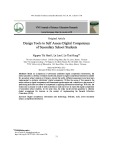

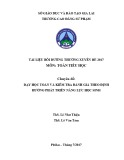
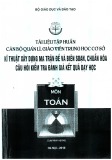
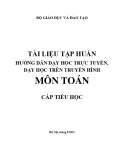

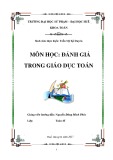



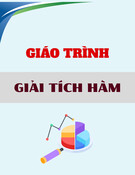
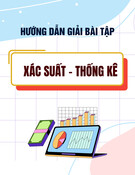
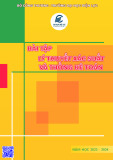






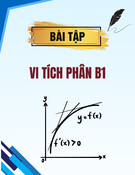
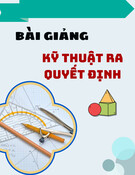
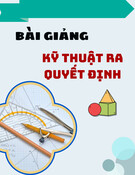
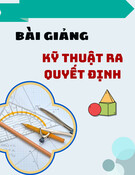
![Quyển ghi Xác suất và Thống kê [chuẩn nhất]](https://cdn.tailieu.vn/images/document/thumbnail/2025/20251030/anh26012006/135x160/68811762164229.jpg)
